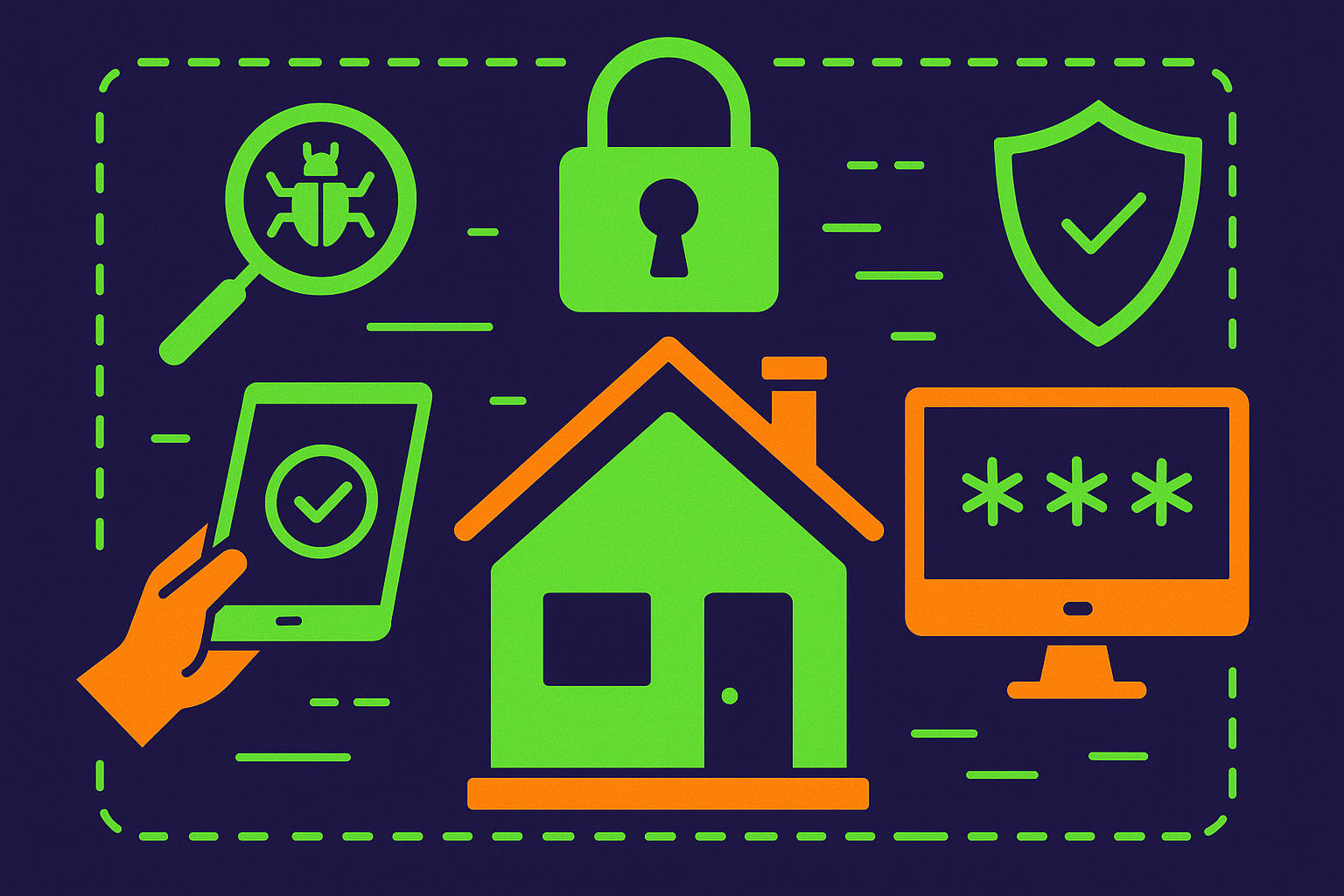Imagine you want to secure your home against burglars. You have two options for testing your security:
Option 1: Hire a security consultant to walk around your house with a checklist, examining every door, window, and lock. They document everything: “Front door lock is 10 years old, back window latch is loose, garage door opener uses outdated encryption, basement window visible from street.” You get a comprehensive report rating each issue by severity.
Option 2: Hire an ethical security tester who actually attempts to break into your home (with your permission, of course). They don’t just look at your locks; they try to pick them, test if windows can be jimmied open, check if the doggy door is large enough to reach through and unlock the back door, and see if they can climb onto your roof via that decorative trellis.
This is the difference between vulnerability scanning and penetration testing.
The Security Assessment: Looking for Weaknesses
The security consultant with the checklist represents vulnerability scanning. They systematically examine your property, comparing it against known security standards:
- All entry points catalogued
- Lock quality assessed
- Window security evaluated
- Alarm system functionality checked
- Lighting adequacy measured
- Fence integrity documented
Their report is thorough and organized by severity:
- Critical: Broken lock on back door
- High: Window can be opened from the outside
- Medium: Outdoor lighting is insufficient
- Low: Fence has a small gap at the bottom
This gives you a comprehensive inventory of potential weaknesses. You know what needs fixing, prioritized by how serious each issue appears to be.
But here’s what the assessment doesn’t tell you: Would a burglar actually be able to get in? And if so, how?
The Break-In Test: Proving Exploitability
The ethical security tester represents penetration testing. They approach your home the way a real burglar would, looking for the easiest path inside.
They might discover things the assessment missed:
- The vulnerability chain: That “low severity” fence gap leads to the side yard, which is hidden from the street by bushes. From there, the “medium severity” basement window is accessible. And while the window is technically locked, the frame is rotted enough that a firm push pops it open. Suddenly, three moderate issues combine into a critical entry point.
- The unexpected weakness: Your front door has an excellent deadbolt (passed the assessment with flying colors), but the door frame is old wood that can be kicked in with one solid hit. The assessment checked the lock, not the frame.
- The creative approach: You have a smart home system that the assessment noted as “secure.” But the tester discovers that your WiFi password is visible on a sticker on your router, which is visible through your home office window from the driveway. Once on your WiFi, they access your smart lock system.
- The human element: The assessment didn’t account for the fact that you hide a spare key under a fake rock near the front door. No amount of high-security locks matters if there’s a key readily available.
Why Both Matter
Here’s the crucial insight: the security assessment tells you what could be vulnerable; the break-in test shows you what is vulnerable.
Vulnerability Scanning (Security Assessment) strengths:
- Comprehensive coverage – checks everything systematically
- Speed – can assess your entire property in hours
- Consistency – never misses standard checks
- Frequency – can be done monthly or quarterly to catch new issues
- Documentation – provides clear remediation lists
Penetration Testing (Break-In Test) strengths:
- Reality check – proves what actually works
- Prioritization – shows which vulnerabilities matter most
- Context – reveals how issues combine in your specific environment
- Detection testing – do your cameras and alarms actually work?
- Creative exploitation – finds weaknesses that automated checks miss
A Real-World Scenario
Let’s say your security assessment shows:
- Front door: Grade A lock ✓
- Windows: All secured ✓
- Alarm system: Active ✓
- Perimeter: Fenced ✓
- Overall rating: Secure
Then the break-in tester arrives and gains entry in 10 minutes. How?
- They notice your garbage contains Amazon boxes, showing you recently bought expensive electronics
- They observe your daily routine; you leave at 7:45 AM every weekday
- They see your dog through the window (a friendly golden retriever, not a guard dog)
- They find your WiFi password on your router visible through a window
- They access your smart home system and unlock the back door remotely
The assessment looked at physical security. The tester looked at the complete attack surface, including human behavior, technology integration, and patterns.
The Dangerous False Confidence
The biggest risk is passing your security assessment and assuming you’re protected. This is like having top-rated locks on every door but leaving a key under the mat.
Many homeowners fall into this trap:
- “My assessment shows 95% of issues resolved. I must be secure!”
- “I have a security system. I’m protected!”
- “All my locks are high-quality. Nobody’s getting in!”
Meanwhile, the would-be burglar notices your garage window doesn’t latch properly, giving access to the garage, where your car has a garage door opener clipped to the visor, providing easy access to the house, bypassing every lock you installed.
How They Work Together
The most effective approach uses both methods:
Regular security assessments (monthly/quarterly) maintain baseline security hygiene. Fix obvious issues before they become problems. Ensure new additions to your property meet security standards.
Periodic break-in tests (annually) validate that your security actually works against a motivated adversary. Confirm that fixing assessed vulnerabilities actually reduced your risk. Identify gaps in your security model.
Post-fix retesting after major changes ensures your improvements are effective and don’t introduce new weaknesses.
Think of it this way:
- Security assessments are your preventive maintenance
- Break-in tests are your stress test under real conditions
You need both to truly understand your security posture.
The Bottom Line
A security assessment tells you: “These things could be exploited.”
A break-in test tells you: “Here’s exactly how I got inside, and here’s how long it took your security system to notice.”
Both perspectives are essential. The assessment catches the obvious issues and maintains security hygiene. The break-in test reveals whether your security model actually withstands a determined adversary who thinks creatively and chains multiple weaknesses together.
Because real burglars don’t follow assessment checklists, they look for the path of least resistance. And often, that path is invisible until someone actually tries to exploit it.
MainNerve: Testing Your Digital Security
MainNerve provides both vulnerability assessments and penetration testing for your organization’s cybersecurity. We don’t just identify potential weaknesses; we ethically test whether those weaknesses can actually be exploited to compromise your systems.
Our penetration testing services reveal the real-world attack paths that automated scans miss, showing you how an adversary would actually breach your defenses and what they could access once inside.
Ready to move beyond checklists and see your security through an attacker’s eyes? Contact MainNerve to schedule a comprehensive penetration test that shows you not just what vulnerabilities exist, but which ones actually threaten your organization.



